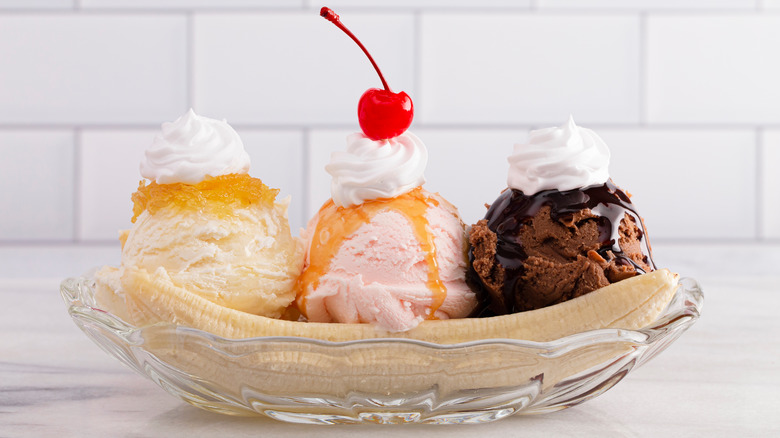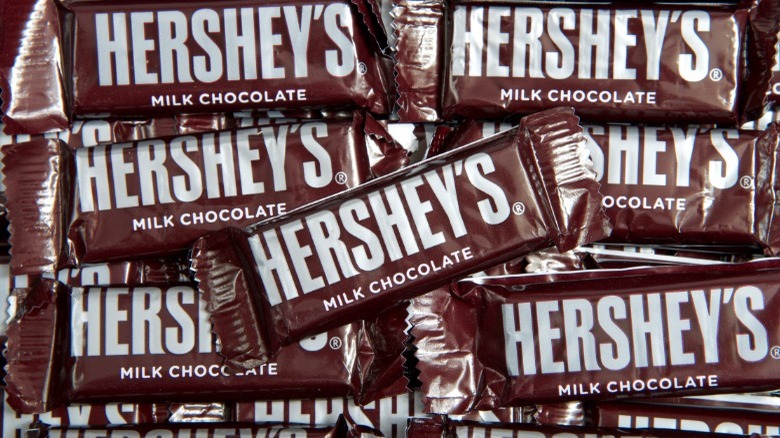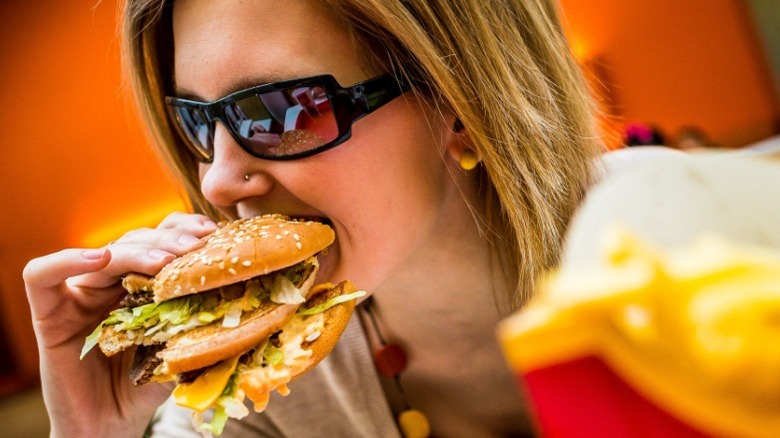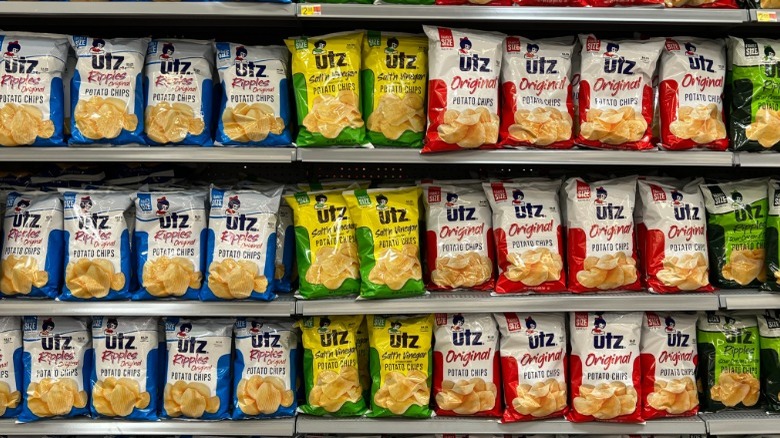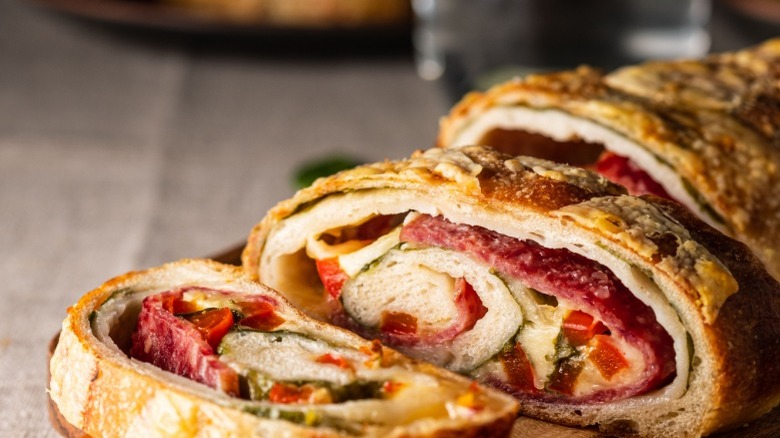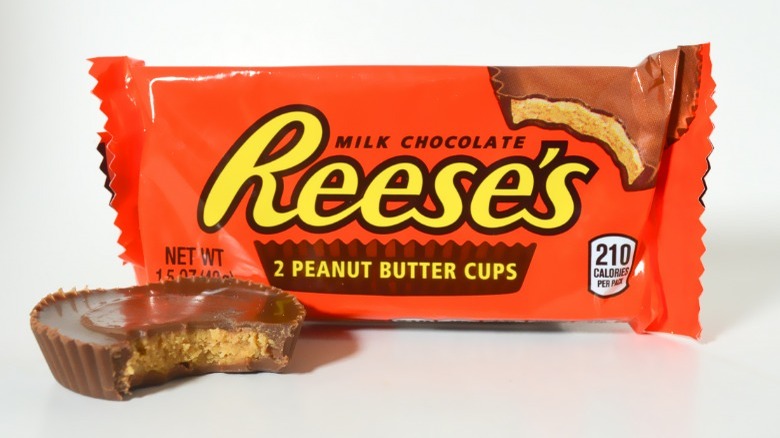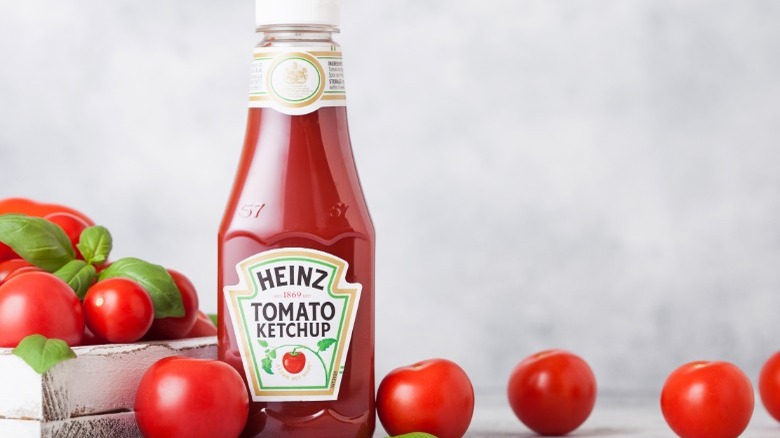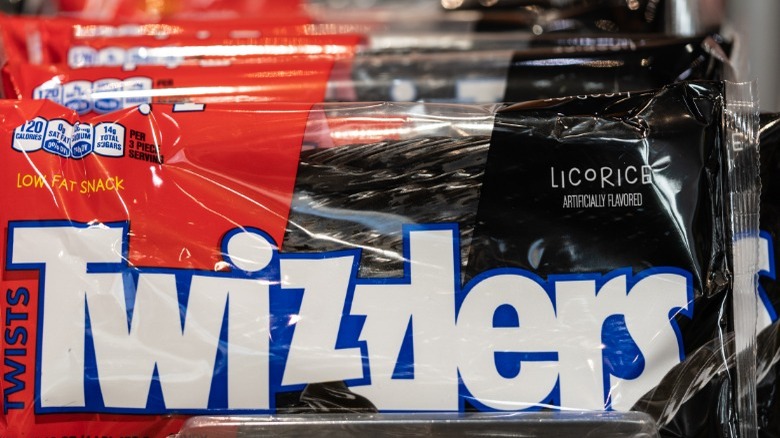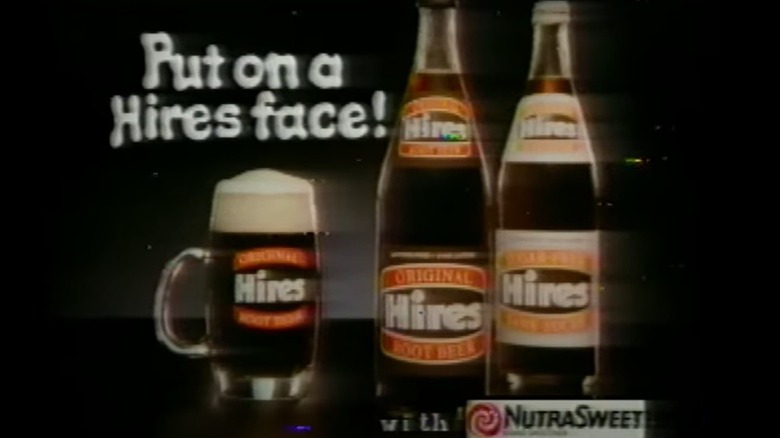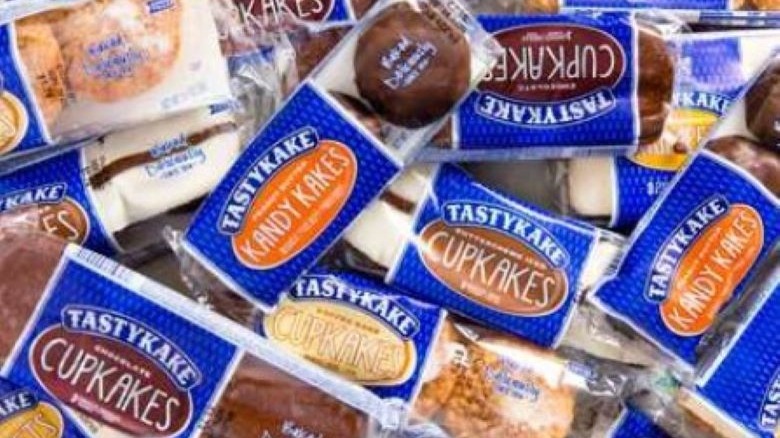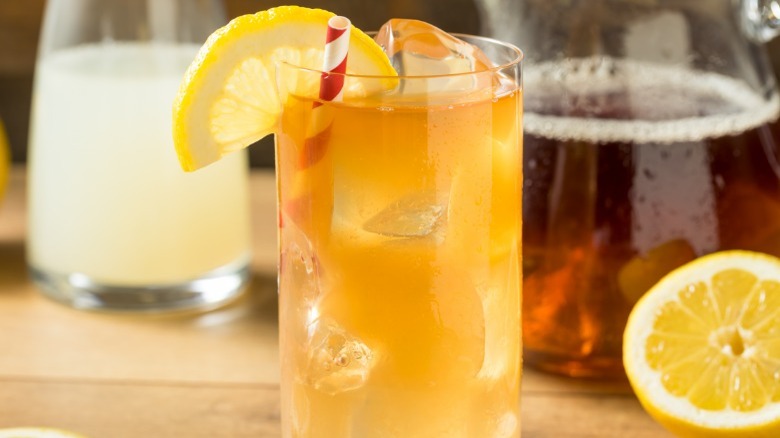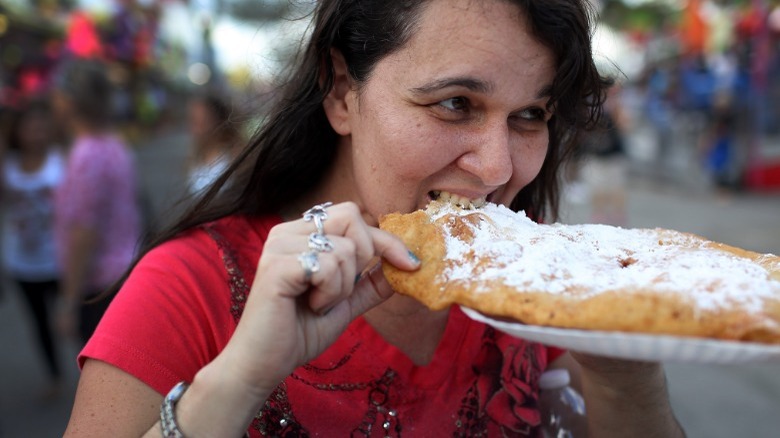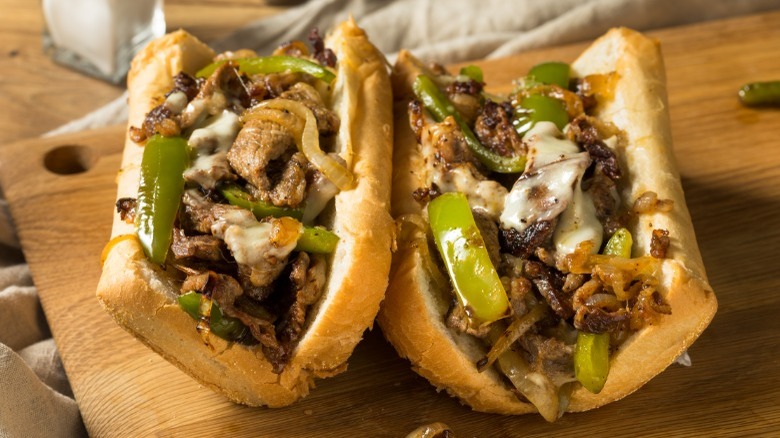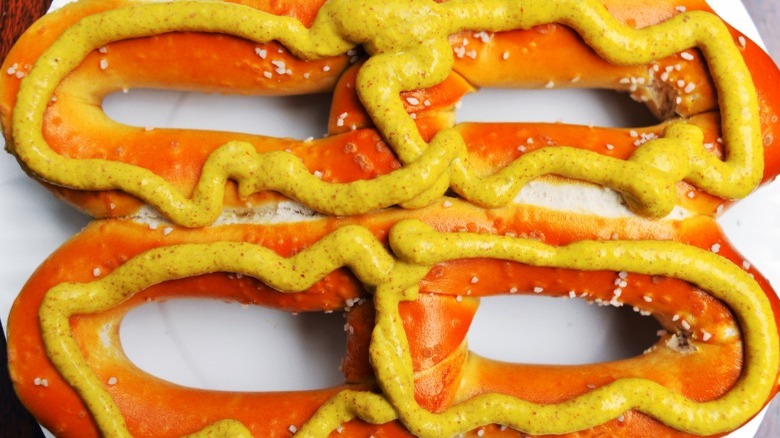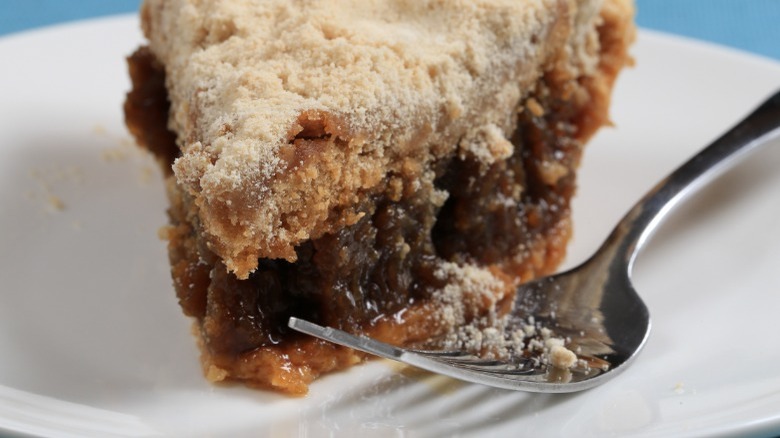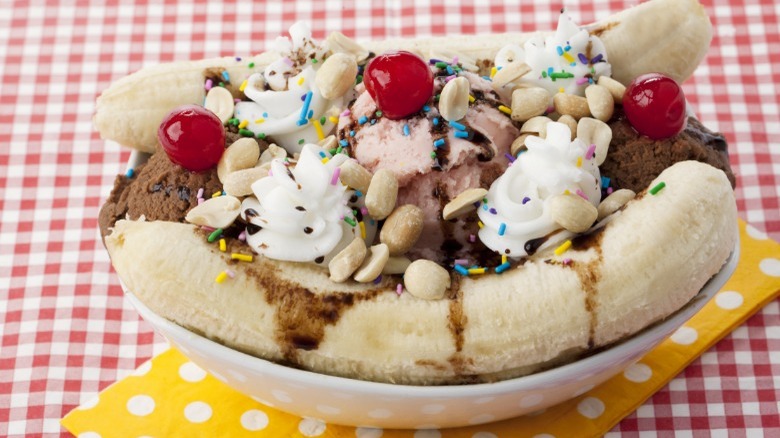16 Famous Foods Invented In Pennsylvania
Pennsylvania isn't one of the largest states in the U.S., but it sure packs in a lot of cultural diversity. To start, the National Park Service shows that Philadelphia is the birthplace of America because it's home to Independence Hall, where the Declaration of Independence was signed. And then you have the Appalachian Mountains, the Pocono Mountains, Pittsburgh, Gettysburg, and the Pennsylvania Amish Country. With so much variety, it's not surprising that so many famous foods originated in the Keystone State.
You may be familiar with a good number of these (if not all) and might be surprised at where they come from. There aren't any salads on the list — or for that matter, anything super healthy. Don't look for entries in all of the food pyramid categories. This is all about salty, sweet, and delicious foods that tickle the taste buds. No healthy balance here, just interesting facts about some fun foods — and a few iconic drinks, too.
Hershey's Milk Chocolate
Trivia experts know that Hershey, PA is the chocolate capital of the United States. The Hershey Company was founded in 1894 by Milton S. Hershey and the first Hershey's Milk Chocolate bars came out six years later. They were sold for 10 cents apiece. Hershey's Kisses were introduced in 1907.
As documented by Hershey Community Archives, Mr. Hershey was already the owner of the Lancaster Caramel Company when he visited Chicago's Columbian Exposition in 1893. After checking out the chocolate-making equipment, he opened up Hershey's as a subsidiary and started experimenting with different production methods.
His first chocolate bars were on the darker side, but then he learned how to mass-produce fresh milk and added that to the recipe. Almonds were added later. A sugar-free version was added in 2003. Hershey's remains one of the most popular chocolate brands in the world despite stiff competition from Lindt, Godiva, and Dove.
The Big Mac
Two all-beef patties, special sauce — yeah, you know the jingle, but were you aware that Big Macs were born in Pennsylvania?
Let's backtrack. McDonald's got its start in San Bernardino, California when salesman Ray Kroc stumbled upon the McDonald brothers' hamburger restaurant. He purchased the exclusive rights to the name and operating system and founded the McDonald's Corporation. Today, Mickey D's is the largest franchise in the world. However, that doesn't mean that all McDonald's menu items were corporate inventions.
The Quarter Pounder was created by California franchisee Al Bernadin in 1971. The Filet-o-Fish was born in Cincinnati, Ohio. The fish sandwich is older (born in 1962) than the Quarter Pounder and the Big Mac; the latter came into existence in 1967. It was invented by Jim Delligatti, a Uniontown, PA McDonald's franchisee. Delligatti even opened a Big Mac Museum to celebrate the sandwich's 40th birthday. It continues to be one of the company's biggest sellers — it's estimated that more than 550 million of them are sold every year, and that's just in the United States.
Lebanon bologna
While some people turn their noses up at packaged, pale-pink bologna, the Lebanon variety is in a different league. It comes from Lebanon County, PA, which is in the heart of the state's Dutch Country. The ingredients include beef, salt, spices, and sugar, and there is a traditional style and a sweet version. Both kinds of Lebanon bologna are dark and reddish-pink.
The history of bologna can be traced back to Italian mortadella, which contains small cubes of fat, pistachio, and peppercorns. The smooth, pinkish stuff seen in delis and refrigerated meat sections is quite different from mortadella, and from Lebanon bologna, too. German immigrants arriving in Pennsylvania in the 17th and 18th centuries added bay leaves, cloves, and ginger to finely ground beef — no pork was used. The beef is also fermented and smoked, giving it that rich, savory flavor. It's classified as a semi-dry sausage and generally contains 90% lean beef with little fillers. The best-known Lebanon bologna maker is located in Palmyra, PA, and is called Seltzer's Lebanon Bologna.
Utz Potato Chips
Sure, they have a funny name, but no one can deny the salty deliciousness of Utz potato chips. The chips were created by Salie and William Utz in their Hanover, PA home in 1921. The couple were selling these fresh, homemade chips under the name of Hanover Home Brand to Baltimore-area markets and grocery stores and became successful enough to branch out in the 1930s. They built a manufacturing facility in 1938 and their son-in-law, F.X. Rice, joined the business. It was incorporated as the Utz Potato Chip Company less than 10 years later.
Today, Utz has four manufacturing facilities and also makes tortilla chips, corn chips, and popcorn. It produces more than 3.3 million pounds of products every week. Danny Palumbo of The Takeout thinks that the Grandma Utz's Kettle-Style version is the best, and significantly better than other mass-market brands. He writes that even though these chips are made with lard instead of oil, they aren't greasy at all. These Utz chips are also thickly cut, and have just the right amount of salt as well as an almost beefy taste that comes from the lard.
Stromboli
Pennsylvania can't take the credit for inventing pizza, but it can lay claim to giving us something that might be even better: stromboli. This delicious Italian delicacy is also known as rolled-up pizza and is either named after the Italian island region of Stromboli or a movie of the same name, depending on who you ask. There's also different stories about who actually invented, though many believe that it was created in 1950s Philly by Chef Nazzareno Romano of Romano's Italian Restaurant & Pizzeria.
The idea is quite simple. You roll out pizza dough and add sauce, cheese, meats, and spices. More ingredients get added in as it's rolled up, and some cooks use chicken, veggies, and other good things. The trick is to seal up the ingredients tightly and bake the stromboli until the top is lightly browned. This is not the same as a calzone, which is folded over and sealed like a pastry instead of being rolled up. Homemade stromboli can be made with from-scratch or refrigerated dough. It's great when served with a side of hot marinara sauce.
Reese's Peanut Butter Cups
In a 2022 survey conducted by Retail Me Not, Reese's Peanut Butter Cups were shown to be the most popular Halloween candy. It's not hard to see why — the saltiness of peanut butter perfectly complements the sweetness and creaminess of the chocolate. Who was the genius that came up with this idea? According to the Hersheyland website, it was company employee H.B. Reese.
Reese started by making peanut butter cups in his basement and introduced them in 1928. He wanted to start his own candy company but needed to get his hands on more chocolate to meet demand, so he turned to his employer. Hershey supplied the chocolate, and Reese's six sons took over the business. They later sold it to the Hershey Company. Now you can find milk chocolate, dark chocolate, and white chocolate Reese's cups. There are also Reese's pieces and baking chips, which are great when you're doing homemade brownies.
Heinz ketchup
Ketchup wasn't invented in Pennsylvania, but the first tomato-based recipe was popularized by Philadelphia scientist James Mease. Ancient southern Chinese texts describe fish sauces called koe-cheup and ge-thcup as far back as 300 B.C. — could these have been the very first condiments? These pasty, salty, and spicy mixtures were popularized by trade routes, and, in the 18th century, ketchup was made from fruits, vegetables, and seafood.
Fast-forward to Pittsburgh, Pennsylvania in the 19th Century, where German immigrant Henry John Heinz was experimenting in his mother's kitchen and tried bottling her grated horseradish. His ketchup was brought to market later, in 1876. He allegedly came up with the idea by adapting a Chinese recipe that was made with tomatoes, starch, and seasonings; the recipe he borrowed from was called Cat Sup. The Heinz ketchup recipe has been the same (almost) for 100 years and continues to be the company's most famous product.
Twizzlers
Twizzlers, the iconic chewy candies, were created in 1929, but their roots go back much further than that. The brand began with Lancaster, PA's Young and Smylie confectionery company, later called Y&S. Merging with two other companies (S.V. & F.P. Scudder and H.W. Petherbridge), Y&S formed the National Licorice Company in 1902.
The company's original form of Twizzlers came out in 1845 and tasted like licorice, an herb that's been used as a flavoring agent for centuries. Today's licorice candies are actually flavored with anise oil, though. Twizzlers are made from corn syrup, wheat flour, sugar, palm oil, and other ingredients. The company didn't introduce the strawberry, chocolate, and other flavors until the 1970s, the same decade that it became a subsidiary of Hershey.
All in all, there have been over 25 different flavors of Twizzlers over the years, including a mystery flavor that was later confirmed to be raspberry. Some of the newer flavors have fruity fillings, too.
Hires Root Beer
Beer has been around for about 6,000 years, and root beer is a direct descendant. According to Renegade Brewing, a Belgian monk named St. Arnold started brewing beer in Belgium monasteries, creating a beverage with 2% alcohol, berries, herbs, and bark. After it was boiled and cooled, yeast was added for fermentation. This same source claims that modern root beer comes from that weaker, sweet drink called small beer. In America, immigrants brewed it and brought in other ingredients like sassafras and sarsaparilla.
Hires Root Beer was the brainchild of Philadelphia pharmacist Charles E. Hires, who made a name for himself in the 1870s. He tried a local root beer at an inn and requested the recipe. Hires later met with area college professors who helped him design a root beer recipe for commercial manufacture. The company got a big boost during Prohibition when it was illegal to consume alcohol. There are other brands like Barq's and A&W, but Hires was the first major brand. Root beer is so sweet and refreshing that many people enjoy cooking with it, too. Root beer pulled pork with root beer BBQ sauce takes around five hours to make from scratch, but is well worth the wait.
Tastykakes
Next up we have the Tastykake brand, which earned an entry in The Encyclopedia of Greater Philadelphia. More than 100 years old, this company was founded in Germantown by Philip J. Bauer and Herbert T. Morris. The two friends opened the Tastykake Baking Company in 1914 with $50,000to get them started, which is over a million bucks in today's money. They put all that cash to good use, creating a beloved brand.
As the legend goes, Herbert's wife was the inspiration for the name: She bit into one and claimed that it was a tasty cake. Tastykakes were a hit because they were reasonably-priced baked goods that local industrial workers could take to work. The business originally started with full-sized, iced loaf cakes and grew to include the Kandy Kake, Butterscotch Krimpet, and Coconut Junior.
The genius of Tastykake lies in the idea of making smaller cakes that could fit into one's hand. It's easy to see why people loved having them in their lunch bags and boxes; they are manageable and the packaging made them less messy. In the 1950s and 1960s, Tastykake installed machinery that cut production time exponentially, meaning no more slow baking and hand-wrapping. Profits took a hit following the 2008 recession and the company was sold to the Georgia-based Flower Foods for $165 million in 2011.
The Arnold Palmer
This non-alcoholic drink was invented by golf legend Arnold Palmer, who often played the course and hung out at the Pennsylvania Latrobe Country Club in the 1960s. One day, he asked his server to add iced tea to his lemonade, something his wife Winnie used to do for him at home. As the Arnold Palmer website explains, another patron overheard his order and asked for the same thing, and word quickly spread.
Did anyone think of combining iced tea and lemonade before Palmer and his wife? Probably, but he was the one who made a mint from it. Arnold Palmer Enterprises and AriZona Beverage Company introduced the brand and it became a hit with consumers. This was a perfect match since AriZona is the top-selling ice tea maker. Its Arnold Palmer beverage celebrated its 20th anniversary in 2022, by which point they were "selling the equivalent of a million cans a day," AriZona's Chris Byrd told Golf Week.
It tastes great on its own, but if you want to make an alcoholic drink out of it, the iced tea/lemonade taste pairs perfectly with Seagram's Sweet Tea Vodka.
Funnel cake
Funnel cake is another example of a treasured Pennsylvania food with roots that can be traced back to the ancient world. It was popularized in the States by the Pennsylvania Dutch and is a staple at festivals, carnivals, and farmers' markets. This is yet another treat that's credited to immigrants from Europe, but it has roots all over the world. It evolved from ancient fried dough cakes made in China, Egypt, and Rome. Germans brought it to PA and called it drechter kuche. Eventually, the name became funnel cake because the batter gets poured through a funnel into hot oil.
This delicious treat is made by squirting the batter into the oil, in a circular, overlapping pattern. When made right, the outside is crisp and lightly browned, and the dough inside is cooked but soft. It's traditionally sprinkled with powdered sugar but can also be topped with fruit and/or chocolate. Two pieces of advice here: Let it cool for a minute or two before you start tucking in, and use plenty of napkins, because things are going to get messy.
Philly cheesesteaks
If you're a foodie, then you've no doubt heard of the iconic Philly cheesesteak. These cheesy, messy hoagies are served on long rolls and the most authentic ones are found in different parts of Pennsylvania and in South Jersey. Visit Philadelphia claims that this beloved sandwich was invented in 1930 by a hot dog vendor named Pat Olivieri, who later opened up Pat's King of Steaks, a well-known Philadelphia restaurant. According to Charleys, the famous sandwich was actually introduced by Pat and his brother Harry Olivieri, and its first incarnation was grilled beef and onions on a roll. Someone thought to add provolone cheese, and they had a bonafide hit.
Word got out, and a competitor called Geno's soon opened up right across the street. Now you can find chicken cheesesteaks, ones made with peppers, lettuce, tomato, and mayo, and cheesesteaks that are as long as your arm. One of the most popular versions is simply made with Cheez Whiz, but American cheese is also a huge seller. People are unbelievably loyal to their favorite cheesesteaks, and you'll often find rankings and reviews. One man was so in love with Pat's Steaks that he was actually buried with one. Is that going too far? Don't answer until you've tried it for yourself.
Philly soft pretzels
Philly soft pretzels are yet another snack introduced to Pennsylvania by German immigrants. Legit ones are dense, soft, and chewy. These are not the hard pretzels you buy in stores; they're more closely related to bread. They come with or without salt, and they are usually served with plenty of mustard.
America's first pretzel bakery opened in Lititz, PA in 1861 and was simply called Pretzel House. According to the legend, the father of owner Julius Sturgis was given the recipe by a traveling vagrant. The Pretzel House is still family-owned and makes these treats the old-fashioned way, with yeast, water, and malt. They are sprinkled with kosher salt and cooked at 550 degrees for no longer than 10 minutes. Funnily enough, pretzel-twisting became the second-highest-paying job in the region. Now, these twisted, salted delights are sold by vendors on Philadelphia streets, either in the traditional pretzel shape or one that looks more like an elongated number eight.
Shoofly pie
There's a bit of uncertainty about the history of Shoofly pie. While many believe it has its roots in 1700s America, others suggest that this decadent dessert may have actually come from England originally. However, it's mostly found in Central PA's Dutch Country. The sweet, sticky filling is made from flour, brown sugar, spices, and molasses. Flour, butter, sugar, and cinnamon are combined to make the crisp crumb topping. Early shoofly pies used leftover beer brewing yeast, but today, baking soda is used instead.
There are a few theories about where that funny name came from. One claims that there was an animal act called Shoofly the Boxing Mule in a local traveling circus in the 1800s. Another legend claims that there was a popular song from that same time that had the phrase shoo fly in it. In later years, Shoofly flour and Shoofly molasses brands were introduced. But, no matter where the name came from, there's no question that this pie goes best with ice cream and/or whipped cream.
Banana split
Who was the first person to realize that bananas go well with ice cream? That's impossible to say, but what we do know is that Westmoreland County, PA's David Strickler gets the credit for inventing (and naming) the banana split. The first documented banana split was served in Latrobe, PA at Strickler's Tassell Pharmacy, way back in 1904. Bananas were widely available in the U.S. at the time, and, apparently, it was Strickler who started cutting them lengthwise and pairing them with ice cream.
Strickler has also been credited for using chocolate, strawberry, and vanilla ice cream and three different kinds of toppings. The final touch was whipped cream. Strickler had a local glass maker design a long, boat-shaped serving dish that was perfect for catching all the melty ice cream and toppings. The banana split was later popularized by Walgreens, which made it a signature dessert. If you want to make a banana split at home, always use yellow, ripe bananas, and don't forget to add a maraschino cherry on top.
